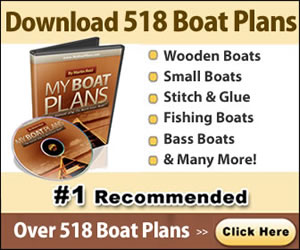
 aluminumboatplans.blogspot.com
aluminumboatplans.blogspot.com ```html
Introduction: Building Your Own Welded Aluminum Boat
Building a welded aluminum boat is an ambitious but rewarding project. It requires skill in welding, metal fabrication, and a good understanding of boat design. This guide provides a step-by-step overview, but professional expertise and thorough research are highly recommended before you begin. Safety is paramount throughout the entire process.
Step 1: Planning and Design
Selecting a Design: Begin by choosing a boat plan that suits your needs and skill level. There are numerous online resources and naval architects offering pre-designed plans for various aluminum boat types. Consider factors such as boat size, hull type (flat bottom, V-hull, etc.), intended use (fishing, recreational boating), and passenger capacity. Reviewing the Plans: Thoroughly review the chosen plan to understand all dimensions, material requirements, and welding instructions. Look for plans that include detailed drawings, material lists, and step-by-step instructions. If the plan is unclear, seek clarification from the designer or an experienced boat builder. Material Sourcing: Determine the type and quantity of aluminum required. Marine-grade aluminum, such as 5052 or 6061 alloy, is commonly used for boat building due to its corrosion resistance and weldability. Calculate the amount of sheet and plate aluminum needed based on the plan's specifications. Source the aluminum from a reputable supplier. Step 2: Setting Up Your Workspace and Tools
Workspace Preparation: Choose a well-ventilated and spacious workspace. Ensure the area is free from flammable materials and debris. A level concrete floor is ideal for building a boat. Essential Tools: Gather the necessary tools, including: - TIG Welder (AC/DC) capable of welding aluminum
- Welding Helmet with Auto-Darkening Filter
- Welding Gloves and Protective Clothing
- Angle Grinder with Cutting and Grinding Discs
- Metal Cutting Shear or Plasma Cutter
- Clamps, Vises, and Magnets
- Measuring Tools (Tape Measure, Square, Level)
- Layout Tools (Scribe, Chalk Line)
- Drill and Drill Bits
- Sandpaper and Grinding Stones
Personal Protective Equipment (PPE): Always wear appropriate PPE, including a welding helmet, gloves, safety glasses, and hearing protection, when working with metal and welding. Step 3: Cutting and Preparing the Aluminum Sheets
Marking the Aluminum: Carefully transfer the patterns from the boat plan onto the aluminum sheets using a scribe or marker. Double-check all measurements to ensure accuracy. Cutting the Aluminum: Use a metal cutting shear, plasma cutter, or angle grinder with a cutting disc to cut the aluminum sheets according to the marked lines. Cut slowly and carefully to avoid warping or damaging the metal. Deburring and Cleaning: Remove any sharp edges or burrs from the cut pieces using a deburring tool or grinder. Clean the aluminum surfaces with a solvent, such as acetone, to remove any oil, grease, or contaminants. Proper cleaning is essential for achieving strong and clean welds. Step 4: Assembling the Hull
Setting Up the Jig: A jig is a framework that holds the aluminum pieces in place during welding. The jig should be built according to the boat plan specifications. Ensure the jig is level and stable. Tacking the Pieces: Position the aluminum pieces within the jig and tack weld them together. Tack welds are small, temporary welds that hold the pieces in place. Ensure all pieces are properly aligned before tacking. Welding the Seams: Once the pieces are tacked together, begin welding the seams using the TIG welding process. Use the appropriate welding parameters (amperage, voltage, gas flow) for the thickness of the aluminum. Weld in short, controlled passes to prevent overheating and distortion. Fairing the Welds: After welding, grind down any high spots or imperfections in the welds using an angle grinder with a grinding disc. Smooth the welds to create a fair and uniform surface. Step 5: Adding Structural Components and Features
Adding Frames and Stringers: Install frames and stringers to provide structural support to the hull. These components are typically made of aluminum angle or tubing. Weld the frames and stringers to the hull according to the boat plan. Installing Decks and Superstructures: If the boat plan includes decks or superstructures, fabricate and weld them in place. Ensure the decks are properly supported and watertight. Adding Other Features: Install any other desired features, such as seats, consoles, railings, or storage compartments. Step 6: Testing and Finishing
Leak Testing: Before painting, test the hull for leaks by filling it with water. Inspect all welds and seams for any signs of water leakage. Repair any leaks by re-welding or applying a sealant. Surface Preparation: Prepare the aluminum surface for painting by sanding or sandblasting. Remove any oxidation or contaminants. Painting or Coating: Apply a marine-grade primer and paint to protect the aluminum from corrosion. Choose a paint that is compatible with aluminum. Alternatively, consider applying a protective coating like a specialized epoxy. Final Assembly: Install any remaining components, such as the motor, steering system, and electrical wiring. Conclusion: Enjoying Your Homemade Aluminum Boat
Building a welded aluminum boat is a significant undertaking, but the result is a custom-built vessel tailored to your specific needs. Remember to always prioritize safety throughout the construction process and comply with all applicable boating regulations. Thoroughly inspect the boat before each use and enjoy the fruits of your labor!
```
Welded Aluminum Boat Plans
 yokoyacht.blogspot.com
yokoyacht.blogspot.com Welded Aluminum Jon Boat Plans
 boatplansfrombasic.blogspot.com
boatplansfrombasic.blogspot.com Aluminum Boat Plans
 aluminumboatplans.blogspot.com
aluminumboatplans.blogspot.com



 aluminumboatplans.blogspot.com ```html
aluminumboatplans.blogspot.com ```html  yokoyacht.blogspot.com
yokoyacht.blogspot.com  aluminumboatplans.blogspot.com
aluminumboatplans.blogspot.com

0 comments:
Post a Comment